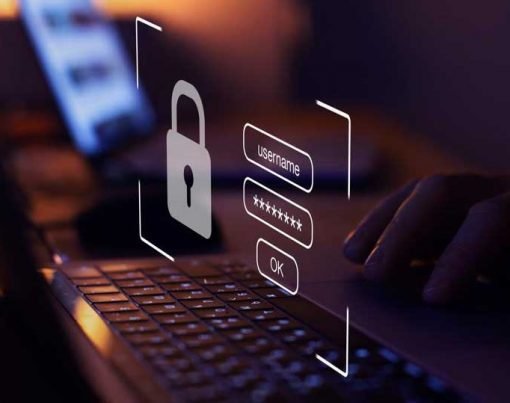Virtual Reality (VR) is rapidly transforming the landscape of education and community learning platforms, bringing immersive and engaging learning experiences to students of all ages. As technology continues to advance, the adoption of VR in educational settings is on the rise. This article explores the rise of virtual reality in education and its various applications, benefits, and challenges.
Table of Contents
Benefits of Virtual Reality Learning Environments
Virtual Reality offers a wide range of benefits for learning environments. It provides a unique and immersive experience that can enhance education in numerous ways. Some key advantages of VR in education include increased engagement, improved retention of information, and the ability to simulate real-world scenarios, allowing students to gain practical knowledge. Additionally, it can accommodate different learning styles and promote active learning, making it a valuable tool for educators.
Immersive Learning Experiences in VR
Immersive learning experiences in virtual reality are at the core of its appeal in education. VR allows students to step into virtual worlds, where they can explore historical sites, travel through the human body, or even conduct experiments in a controlled environment. This immersion helps students better understand complex concepts by engaging multiple senses and providing a deeper level of understanding. Furthermore, VR can make learning fun and memorable, making it an effective tool for teaching a variety of subjects.
Distance Learning vs. Online Learning
Distance learning vs online learning are often confronted, but there are subtle differences between the two. Both methods of education involve remote instruction, but they can vary in terms of delivery, structure, and context. Here’s a breakdown of the key distinctions between distance learning and online learning:
- Delivery Medium:
- Distance Learning: This is a broad term that encompasses all forms of learning that take place when the learner and instructor are separated by physical distance. It can include traditional methods like correspondence courses, where instructional materials are sent by mail, as well as more modern methods.
- Online Learning: Online learning specifically refers to education delivered through the internet. It often involves the use of learning management systems (LMS), video conferencing, and other online tools. Online learning is a subset of distance learning.
- Communication and Interaction:
- Distance Learning: Communication in distance learning can take various forms, including postal mail, telephone, or even face-to-face meetings if students are not physically proximate to the educational institution.
- Online Learning: Online learning heavily relies on digital communication tools, such as email, discussion forums, chat, video conferencing, and instant messaging. It offers more opportunities for real-time interaction between students and instructors.
- Flexibility:
- Distance Learning: Distance learning can be more flexible in terms of scheduling, as it may not require students to log in at specific times. Assignments and coursework deadlines are typically more forgiving.
- Online Learning: Online learning can also be flexible, but it often includes scheduled activities like live lectures or discussion board participation. However, many online courses still allow students to work at their own pace.
- Content Delivery:
- Distance Learning: Content delivery in distance learning can vary widely. It might involve physical textbooks, printed study materials, or other tangible resources.
- Online Learning: Online learning is primarily digital, with course materials, lectures, readings, and assignments provided electronically through the internet.
- Technology Requirements:
- Distance Learning: While technology may be used in distance learning, it is not as dependent on internet access and modern devices as online learning. Traditional distance learning methods may require less technology.
- Support and Resources:
- Distance Learning: Distance learners may have limited access to on-campus resources, such as libraries and in-person support services.
- Online Learning: Online learners often have access to a broader range of online resources and support services, and they can engage with instructors and peers more easily through digital means.
In recent years, online learning has become increasingly popular due to its accessibility and convenience. However, the terms are sometimes used interchangeably because both approaches involve remote education, and many distance learning programs have incorporated online components. Ultimately, the choice between distance learning and online learning depends on the specific needs and preferences of the learner and the educational institution providing the instruction.
Virtual Field Trips: Exploring the World from the Classroom
One of the most exciting applications of virtual reality in education is the ability to take students on virtual field trips. Traditional field trips can be expensive, logistically challenging, and limited in scope. VR allows students to explore distant lands, historical sites, and various ecosystems from the comfort of their classrooms. It breaks down geographical barriers and provides access to experiences that would otherwise be unavailable to many students. This immersive approach to learning can spark curiosity and enhance global awareness.
VR Simulations for Practical Skills and Training
Virtual Reality simulations have revolutionized practical skills training. From medical procedures to pilot training, VR can replicate real-world scenarios with high fidelity. It provides a safe and controlled environment where students can practice and refine their skills without the risk associated with traditional training methods. This is particularly beneficial in fields where hands-on experience is critical, and it can significantly reduce the cost of training materials and resources.
Overcoming Challenges in Implementing VR in Education
While the potential benefits of VR in education are clear, there are challenges to overcome. Some of the primary hurdles include the cost of hardware and software, technical expertise required for implementation, and the need for ongoing support and maintenance. Additionally, ensuring equitable access to VR experiences for all students can be a challenge. Addressing these issues is essential for the widespread adoption of VR in education.
Pedagogical Strategies for VR-Enhanced Instruction
Integrating VR into the curriculum requires thoughtful pedagogical strategies. Teachers need to understand how to leverage VR to enhance learning rather than merely substituting traditional methods. Effective pedagogical strategies include designing interactive VR lessons, aligning content with learning objectives, and providing opportunities for student collaboration. Proper training for educators is essential to ensure they can maximize the benefits of VR in the classroom.
VR Hardware and Software Options for Educators
The hardware and software options for educators looking to incorporate VR in their classrooms continue to expand. VR headsets, such as the Oculus Rift, HTC Vive, and various mobile solutions, provide different levels of immersion and interactivity. The choice of hardware depends on the specific needs and budget of the educational institution. Additionally, an array of educational software and platforms is available, allowing educators to create and deliver VR content tailored to their curriculum.
Case Studies: Successful Integration of VR in Classrooms
Several educational institutions have successfully integrated VR into their classrooms, resulting in improved learning outcomes. Case studies showcase the real-world impact of virtual reality on education. These examples highlight how VR is used in diverse subjects, such as science, history, and art, and how it benefits students. They provide insights into how institutions have overcome challenges and effectively incorporated VR into their teaching methodologies.
Conclusion
Virtual reality is redefining the way we approach education. It offers unique benefits, such as immersive learning experiences, virtual field trips, and practical skills training. However, challenges like cost and equity must be addressed.
With the right pedagogical strategies and the selection of suitable hardware and software, educators can harness the potential of VR to provide engaging and effective learning experiences for students. The case studies of successful integration underscore the positive impact that VR can have on education, making it a promising tool for the future of learning.










